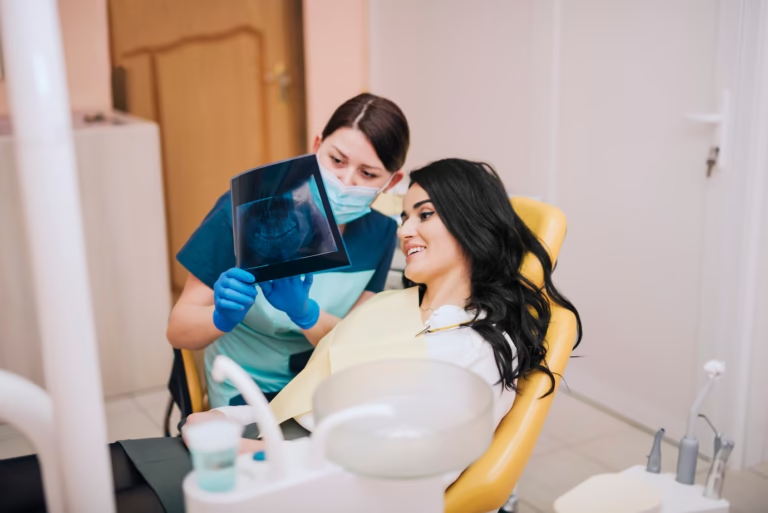How Diet Affects Acne: What to Eat and Avoid
Acne isn’t just about hormones or genetics—your diet plays a significant role too. Certain foods can trigger inflammation, increase oil production, and disrupt hormone balance, leading to breakouts. Conversely, a balanced diet can help keep your skin clear and glowing. In this blog, we’ll explore the connection between diet and acne, including what to eat and what to avoid for healthier skin.
The Link Between Diet and Acne
Research has shown that certain foods can influence sebum production, inflammation, and insulin levels, all of which can contribute to acne. While not everyone is affected by the same triggers, understanding your diet’s role is a vital step in managing acne.
Foods That Can Trigger Acne
1. High-Glycemic Foods
Foods with a high glycemic index (GI) cause blood sugar spikes, leading to increased insulin levels, which can trigger excess oil production.
- Examples to Avoid: White bread, sugary cereals, pastries, candies, and soda.
2. Dairy Products
Milk and other dairy products may stimulate insulin and hormone levels, potentially worsening acne.
- Worst Offenders: Skim milk, cheese, and ice cream.
- Tip: Try plant-based alternatives like almond, soy, or oat milk.
3. Fast Food and Processed Snacks
High in refined carbs, unhealthy fats, and additives, fast food contributes to inflammation and clogged pores.
- Examples to Avoid: Fries, burgers, chips, and packaged snacks.
4. Chocolate
While the relationship isn’t entirely clear, some studies suggest that the sugar and dairy in chocolate may exacerbate acne.
- Tip: Opt for dark chocolate with at least 70% cacao and minimal sugar.
5. Excessive Omega-6 Fatty Acids
An imbalance of omega-6 to omega-3 fatty acids can promote inflammation.
- Sources to Limit: Vegetable oils (corn, soybean, sunflower) and processed snacks.
Foods That Help Prevent Acne
1. Low-Glycemic Foods
Low-GI foods stabilize blood sugar levels and reduce insulin spikes, promoting clearer skin.
- Examples: Whole grains, quinoa, legumes, and non-starchy vegetables like spinach and broccoli.
2. Omega-3 Fatty Acids
Omega-3s have anti-inflammatory properties that can help reduce acne.
- Sources: Fatty fish (salmon, mackerel), walnuts, chia seeds, and flaxseeds.
3. Probiotics
A healthy gut is crucial for balanced skin. Probiotics reduce inflammation and support a healthy skin barrier.
- Sources: Yogurt (dairy-free options if needed), kefir, kimchi, sauerkraut, and kombucha.
4. Antioxidant-Rich Foods
Antioxidants combat free radicals and support skin healing.
- Sources: Berries, green tea, dark leafy greens, and colorful fruits like oranges and kiwis.
5. Zinc-Rich Foods
Zinc helps regulate oil production and inflammation.
- Sources: Pumpkin seeds, lentils, chickpeas, oysters, and eggs.
6. Vitamin A and Beta-Carotene
Vitamin A promotes skin cell turnover, while beta-carotene helps reduce inflammation.
- Sources: Carrots, sweet potatoes, kale, and spinach.
Hydration and Skin Health
Dehydration can make your skin more prone to oiliness and breakouts.
- Water Intake: Aim for 8–10 glasses of water daily.
- Hydrating Foods: Watermelon, cucumber, and citrus fruits.
Lifestyle Tips to Complement a Skin-Friendly Diet
- Sleep Well: Poor sleep increases cortisol, which can trigger acne.
- Exercise Regularly: Physical activity improves circulation and reduces stress.
- Manage Stress: Chronic stress disrupts hormone balance, worsening acne.
Sample Acne-Friendly Meal Plan
Breakfast
- Avocado toast on whole-grain bread with a side of berries.
- Green tea for antioxidants.
Lunch
- Grilled salmon salad with spinach, cherry tomatoes, and olive oil dressing.
- A small handful of walnuts for omega-3s.
Dinner
- Quinoa and roasted vegetables (zucchini, sweet potatoes, and bell peppers).
- Steamed broccoli on the side.
Snacks
- Carrot sticks with hummus.
- Dark chocolate (70% cacao) and almonds.
When to Seek Professional Help
If dietary changes don’t improve your acne, consult a dermatologist or a registered dietitian. They can help identify underlying causes and recommend targeted treatments.
Conclusion
Your diet is a powerful tool for managing acne. By avoiding trigger foods and incorporating nutrient-rich, anti-inflammatory options, you can support clearer, healthier skin. Remember, consistency is key—small changes to your diet can lead to significant improvements over time.
Share this:
- Click to share on Facebook (Opens in new window) Facebook
- Click to share on X (Opens in new window) X
- Click to share on LinkedIn (Opens in new window) LinkedIn
- Click to share on Reddit (Opens in new window) Reddit
- Click to share on X (Opens in new window) X
- Click to share on Pinterest (Opens in new window) Pinterest
- Click to share on WhatsApp (Opens in new window) WhatsApp







